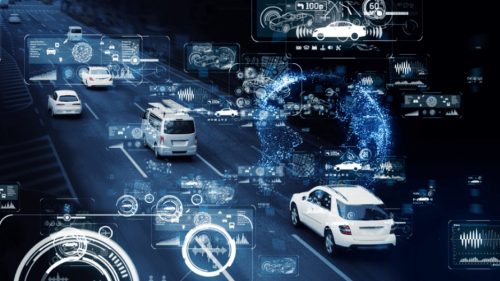
We live in a connected world, and telematics is here to stay. The world of telematics has seen a number of advances over the last few years. Some of these are clearly visible while others are hidden yet highly important to understand what’s next in this space.
Telematics has given rise to a whole spectrum of vehicle-based sensors that are now capable of not just monitoring and tracking, but also controlling and improving cars. We’ll take a look at the latest advances in telematics to see just how far we’ve come in this rapidly evolving market.
Internet of Vehicles
IoT is about to invade our roads, thanks largely to V2I (Vehicle-to-Infrastructure). V2I technology allows vehicles to interact with their surroundings, be it at traffic lights, road signs, or even in case of accidents. Self-driving cars, by default, need this type of technology in order to track their surroundings and make decisions accordingly.
However, the entire traffic system, including non-autonomous vehicles benefit from this innovation. “The implementation of V2I systems across road networks can help reduce traffic congestion, accidents, and fatalities by providing drivers with real-time updates about road conditions and weather changes that affect travel,” says Nicholas D, founder of Vehicle Transport Services; one of the cheapest car shipping companies in the United States of America.
Particularly, it helps improve roadway safety through better management of traffic lights, signs, and markings.
Therefore, the Internet of Vehicles (IoV) is enjoying renewed attention due to the convergence of IoT, location-based services, and telematics. The need for IoV is growing in response to the fast pace of innovation in connected car technologies.
Comprehensive Analytics
Top-performing fleets are using intelligent driver support solutions, but many are still struggling to maximize the benefits of the technology, particularly in supply chain and logistics management. Supply chain managers want to know that the drivers who carry their goods are safe and efficient — and this goes beyond crash avoidance and maintenance programs to more encompassing methods that optimize overall performance.
Today’s telematics devices continue to evolve toward more capable units that can capture a much broader array of data. The result is a complete picture that helps identify several vital predictive factors. As with any technology, telematics is constantly evolving and improving. The latest advancements provide more information about driver behavior behind the wheel, including predictive alerts to help prevent accidents before they happen. Tailored to individual drivers, these systems are assisting fleets to improve safety while boosting productivity and reducing costs. This is even more important when handling safety-critical, such as a car shipping service.
In any case, what is needed is a comprehensive telematics solution integrated with AI and Big Data that includes the proprietary algorithms required to predict when drivers are at risk accurately.
Maximizing Efficiency
The latest developments in fleet telematics are being driven by the need to reduce costs, improve efficiency and maximize asset uptime. These advances also benefit from more intelligent AI (artificial intelligence) and more sophisticated machine learning capabilities. This ensures that vehicles and equipment are operating at optimal levels and performing at peak efficiency to support business goals while reducing unexpected downtime and ultimately delivering a better customer experience through proactive service.
As companies continue to seek ways to maximize their operational efficiency, there is a clear trend towards automation, control, and optimization of all systems and processes. This includes maximizing fleet uptime, which relies heavily on effective asset management and maintenance scheduling. Advanced telematics systems can provide real-time data for these procedures. This not only helps with asset uptime but also minimizes downtime and disruption. However, one of the biggest challenges facing businesses today is data overload. Today’s telematics systems can resolve this problem by installing sensors that streamline information collection and analysis for improved productivity and uptime.
Cybersecurity
But are we at risk of information overload? A wealth of data pouring in from your vehicles, drivers, mobile workers, and other connected devices creates a massive challenge for businesses. With data security being such a significant concern for businesses, the advent of 5G networks will be crucial for expanding telematics in business management. Not only is it essential that this new network can handle the amount of data being generated by vehicles, but it also has to be able to protect sensitive data from cyber-attacks.
Cybersecurity breaches are increasingly common and are more likely when devices are connected to a network since this provides access for hackers to exploit. Therefore, it is essential for the development of telematics applications to take into account any potential risks involved with these devices being connected to a network.
Conclusion
Technology has made cars safer and more convenient than ever before. It is no longer the sole domain of engineers but has been introduced to a broader audience. The future looks promising for telematics technology and the innovative applications that will arise from it. More advanced, practical applications are being developed daily, while other previously impossible ones become everyday realities.
Author Bio:
Daniel Moayanda is a Digital Marketing Expert/Consultant, & Founder of NNON Movement. He’s also a Guest Contributor to InfoSecurity Magazine, Huffington Post, Dzone, SAP, etc.
Interesting Related Article: “Software development for the automotive industry“

